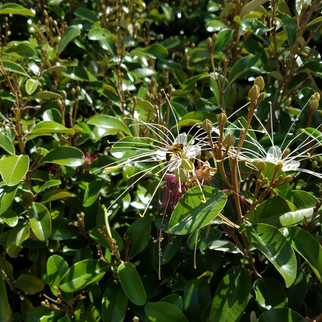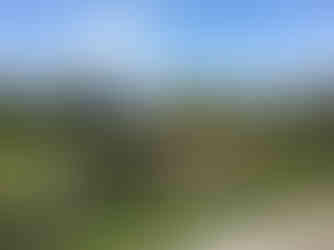Naturalized Roadways
- Curtis + Rogers Design Studio
- Apr 19, 2023
- 4 min read
The Florida Department of Transportation (FDOT) manages approximately 186,121 acres of right-of-way within the State Highway System, about half of which is vegetated. Like many highways in the US, most of this vegetation comes as a blanket of turfgrass to stabilize soil and provide a safe clear recovery zone for vehicles. Beyond that, only sporadic remains of native plant communities exist in areas left undisturbed by mowing, struggling to thrive in such isolated conditions.

So when Curtis + Rogers was presented the opportunity to re-landscape three interchanges within a 3-mile portion of the Palmetto Expressway/SR 826 (an iconic piece of infrastructure that embodies many of the negatives associated with American highways) our challenge became clear. The task was to take what had previously been viewed as a liability and re-frame its presence as an asset.

At first, our feelings were somewhat perplexing; how do you take a highway with limited right-of-way immersed in a sea of industrial land use and make its landscape relevant? This portion of the Palmetto is brutally harsh, noisy, and relentless. It is surrounded by a cacophony of signage and industrially built disruption. It is worn and gray. It is embodied by stagnant traffic, a lack of aesthetics, and an overall poor communal perception.
At this point, we turned to FDOT’s Project Development and Environment Study (PD&E) for more information. In the study, the Palmetto Expressway was identified as a “north/south connector and feeder that provides connectivity, for motorists, in all directions throughout South Florida”. The idea of being a connector and feeder inspired us in that we knew these were tangible positives associated with the highway, themes we could build upon in our landscape design.
The study also identified various avian species of special concern; Wood Storks, Southeastern American Kestrels, Bald Eagles, Snowy Egrets, Little Blue Herons, Tricolored Herons, White Ibis, Black Skimmers, and Least Terns were all observed either within or adjacent to the project corridor. This pushed us in a meaningful direction - creating habitats for species that have suffered due to habitat loss.
With this valuable information, our design strategy began to take form – developing spatial heterogeneity in a landscape that had become exceedingly homogenous, one of the main principles in landscape ecology. In other words, we sought to create biologically diverse “eco-patches” to counteract the monotony of the urban-industrial matrix that defined the surrounding landscape. By using the interchanges along SR-826 urban corridor as a starting point, our landscape design would naturalize the roadway to create a more interconnected habitat for migratory birds and pollinator species to thrive, as well as an aesthetically pleasing viewshed for a motorist’s journey.
In the design of the “eco-patches,” we wanted to follow one of the main tenants of landscape ecology- using convoluted shapes with coves and lobes, rather than a linear and round boundary between the patch and surrounding turfgrass. This, coupled with high vertical and horizontal structural diversity across the landscaped area, creates a perfect setting for species to thrive. By incorporating multiple layers and levels of native vegetation, our landscape design fosters increased species interactions within the interchange.
Another element integral to the success of the “eco-patches” was developing a diverse palette of native plant species arranged by the following plant communities: Hardwood Hammock, Wildflower Prairie, Cypress Swamp, Depression Marsh, Flatwood Pond. In mimicking the collection of species that would exist in the natural environment, we sought to create a biodiverse space with high species richness and even distribution. We also made sure that within these native plant communities we highlighted the relationship between the birds and other pollinators found in the area with the specific plant species that support their activities. This way we pay special attention to making the habitat suitable for the species that may inhabit it.

While this shift from formalized to naturalized initially concerned the FDOT, especially considering their previous experiences with roadside vegetation and its high maintenance costs. (In 2011-2012, the cost of vegetation management was at least 33.5 million, with over 25% of that going to mowing alone). This was not the case with our proposed design. Because our intention was to recreate native habitats that once existed within the landscape, once everything had been installed and established, the best thing for the health and productivity of the habitat was to be left alone. Once FDOT understood that there was no increased maintenance, and in fact, would require a decrease in current maintenance practices; the design was accepted.
Now, after 5 years since the project kick-off meeting, our naturalized roadways are finally beginning to take form. By numbers, our final design incorporated 35 different South Florida native species; restored over 22 acres of native habitat, and captured approximately 6 tons of carbon dioxide and 771,000 gallons of rainfall each year by newly planted trees. Along with these improvements our landscape design called for reduced mowing to allow for wildflowers to bloom and prohibited the use of herbicides that would harm wildlife and inevitably become runoff pollution in our local waterways. And as you can see below, our work has paid off! The “eco-patches” are thriving!






























